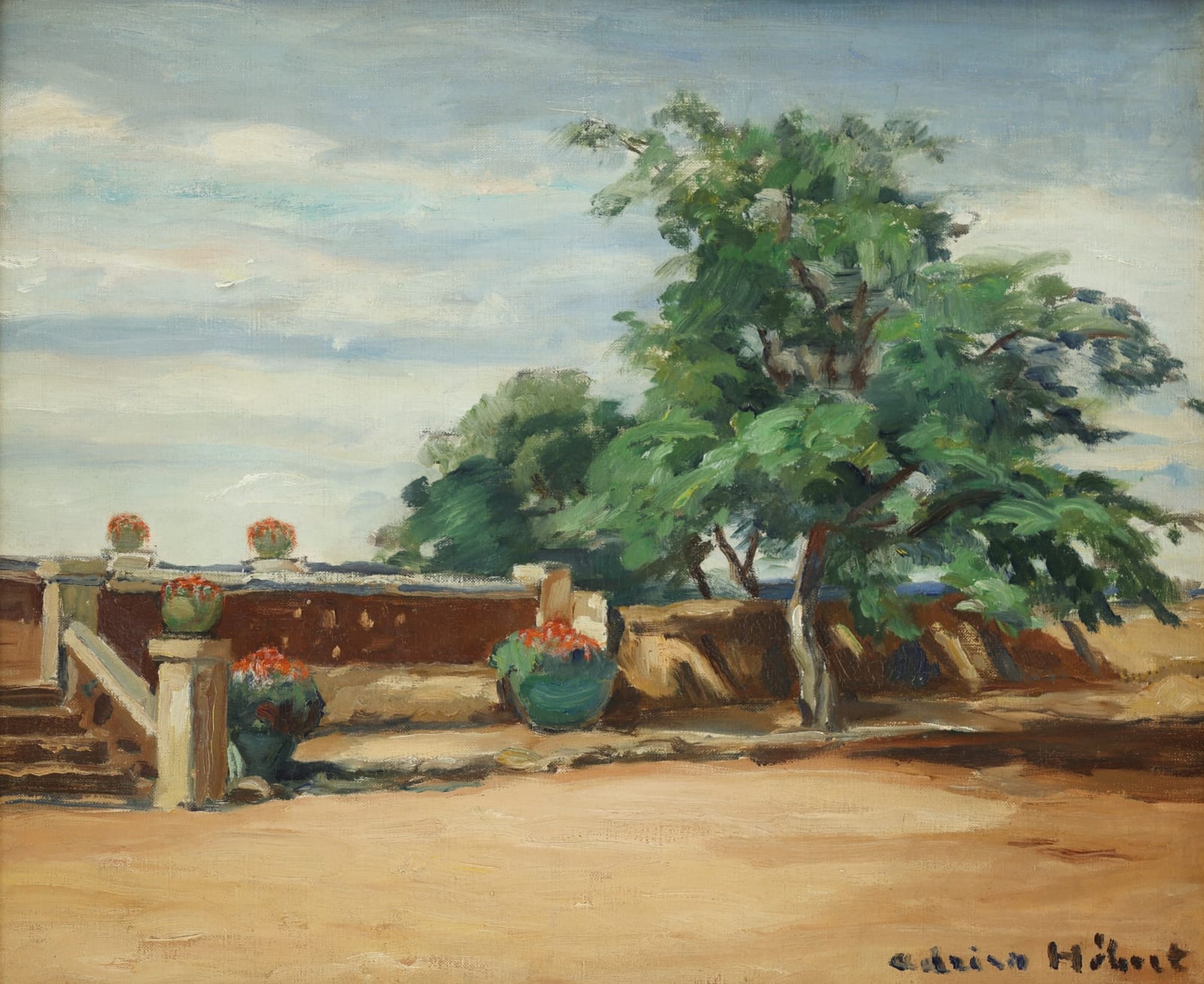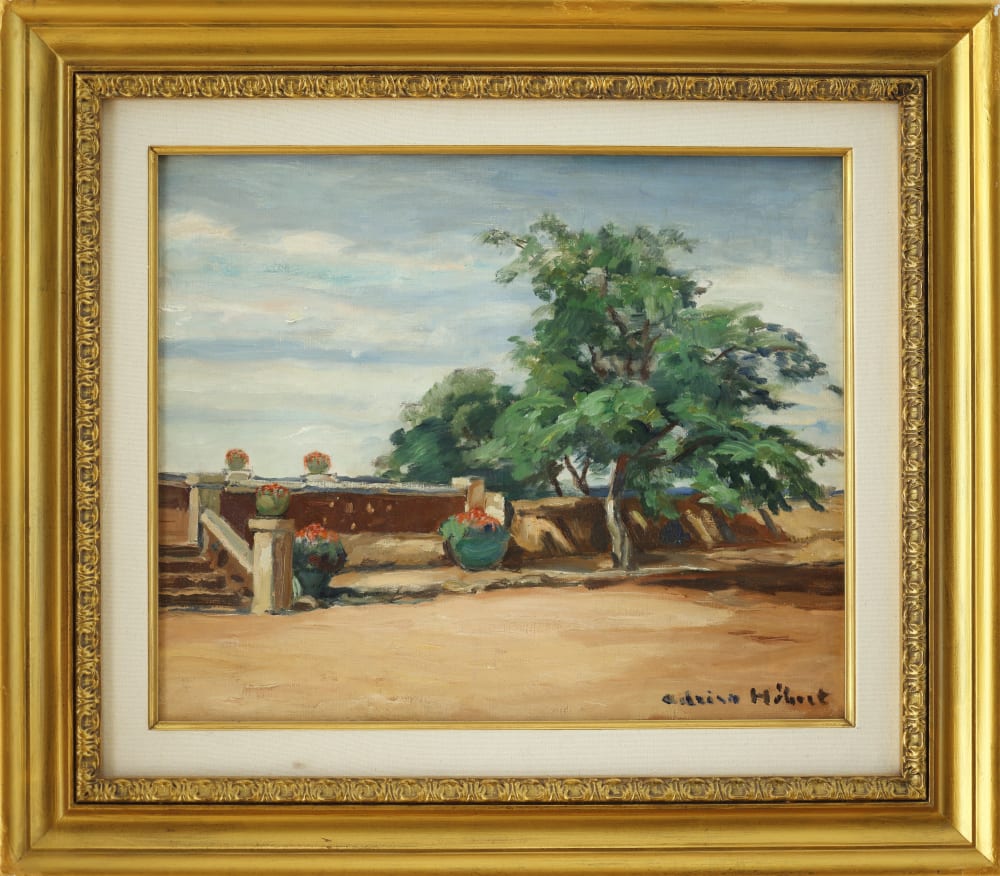Adrien Hebert Canadian, 1890-1967
Further images
In Jardinieres, Adrien Hébert steps away from his usual focus—the industrial bustle of the Port of Montreal, with its steamships, cranes, freighters, docks, and longshoremen—as well as the city's busy street scenes on thoroughfares like St. Catherine Street and Craig Street, to capture a quiet domestic moment. Flower pots basking in warm light absorb the calm of a sunlit terrace.
The strong shapes, thoughtful composition, and tones of terracotta, pale stone, and foliage green mark a rare departure from this pivotal and distinctive figure in Canadian art history. Hébert, known for his innovative approach to urban realism, was a trailblazer among early 20th-century painters documenting Canada’s industrial and social transformation.
Light and shadow move subtly across the surfaces, adding depth and softness. Though the subject is modest, Hébert’s confident brushwork gives it a striking presence. There’s a sense of calm order here, a stillness that feels both urban and timeless, like a hidden oasis in the heart of an apartment block near the Port of Montreal.
Hébert’s urban realism stands in contrast to contemporaries like Marc-Aurèle Fortin and Clarence Gagnon, whose work often celebrated rural Quebec. Yet he shared common ground with fellow Montreal painters such as Maurice Cullen, Edwin Holgate, and Edmond Dyonnet, all part of a generation shaping Quebec’s modern visual identity through both subject matter and evolving technique.
Jardinieres reveals another side of Hébert—less documentary and more reflective—where structure meets serenity in a personal corner of city life.
Jardinieres is an oil on canvas that measures 15 x 18 and in and is signed on the bottom right .






